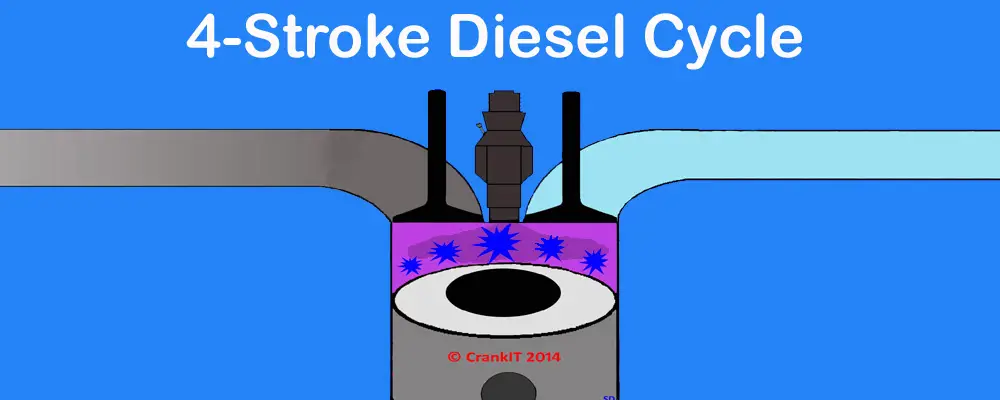Diesel Engine Principle and Working Cycle Explained:
Basically, there are two types of diesel engine types – the Four Stroke and Two Stroke. The ‘Diesel Cycle’ uses higher Compression-Ratio. It was named after German engineer Rudolph Diesel, who invented and developed first Four-Stroke diesel engine. The four strokes of the diesel cycle are similar to that of a petrol engine. However, the ‘Diesel Cycle’ considerably defers by the way the fuel system supplies the diesel the engine and ignites it.
A conventional internal combustion diesel engine works on ‘Diesel Cycle’. In the simple diesel engines, an injector injects diesel into the combustion chamber above the piston directly. The ‘Compression-Ignition engine’ is also another name for the Diesel engine. This is mainly because it burns the diesel with hot and compressed air. The temperature of the air inside the combustion chamber rises to above 400°c to 800°c. This, in turn, ignites the diesel injected into the combustion chamber. Thus, the ‘Diesel Cycle’ does not use an external mechanism such as a spark-plug to ignite the air-fuel mixture.
The Four-Stroke diesel engine works on the following cycle:
1. Suction Stroke – With pistons moving downwards and the opening of the inlet valve creates the suction of clean air into the cylinders.
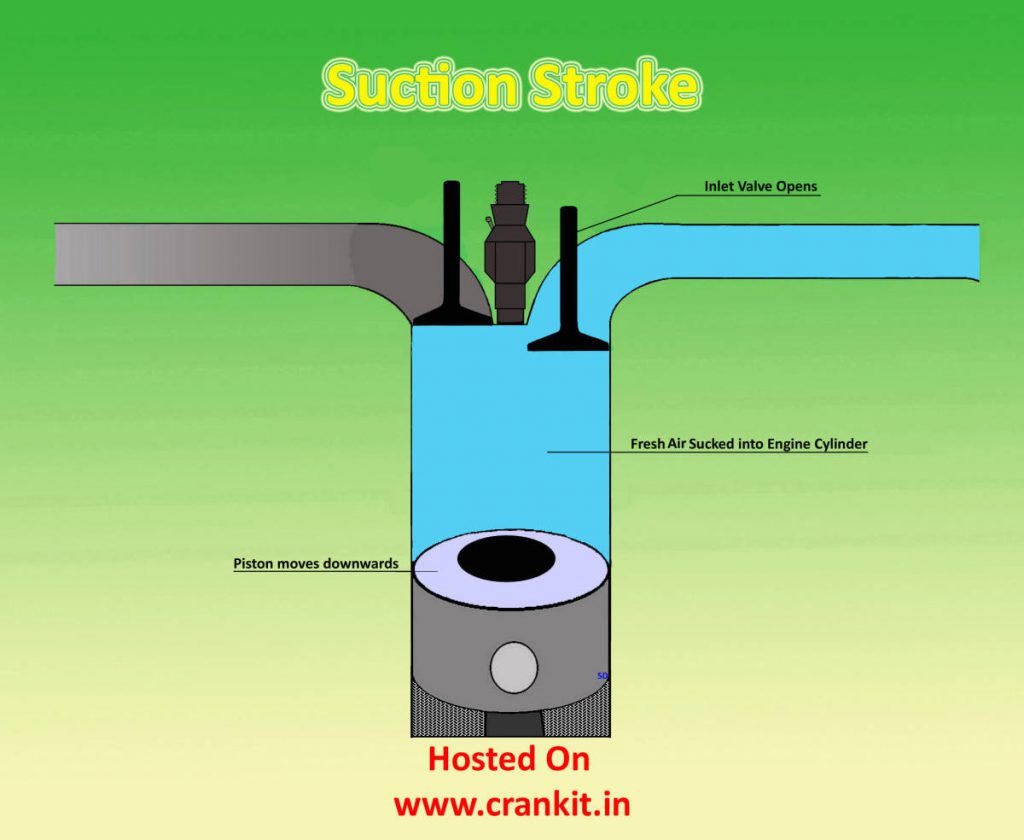
2. Compression – With the closing of Inlet valve the area above the piston gets closed. The piston moves up resulting in compression of the air in a confined space under higher compression-ratio.
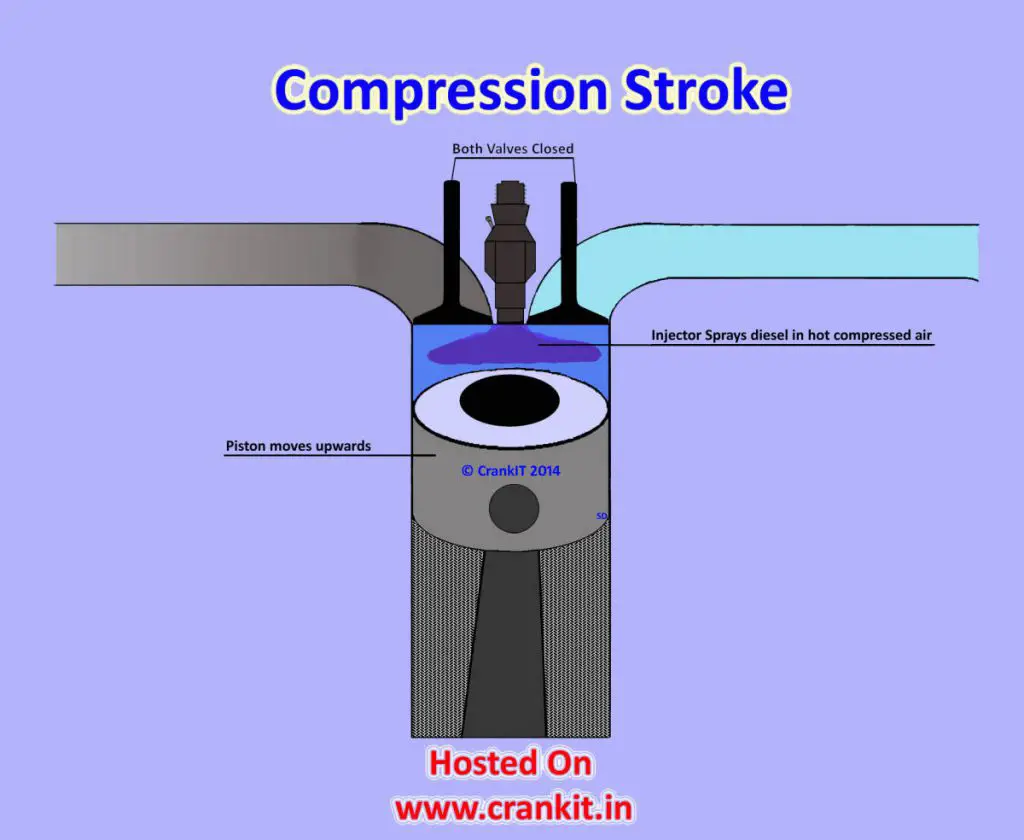
Combustion Process – At this stage, the injector sprays the diesel into the combustion chamber. The rise in temperature of the air caused by its compression; results in instantaneous burning of diesel with an explosion. This causes heat to release which generates expanding forces known as power.
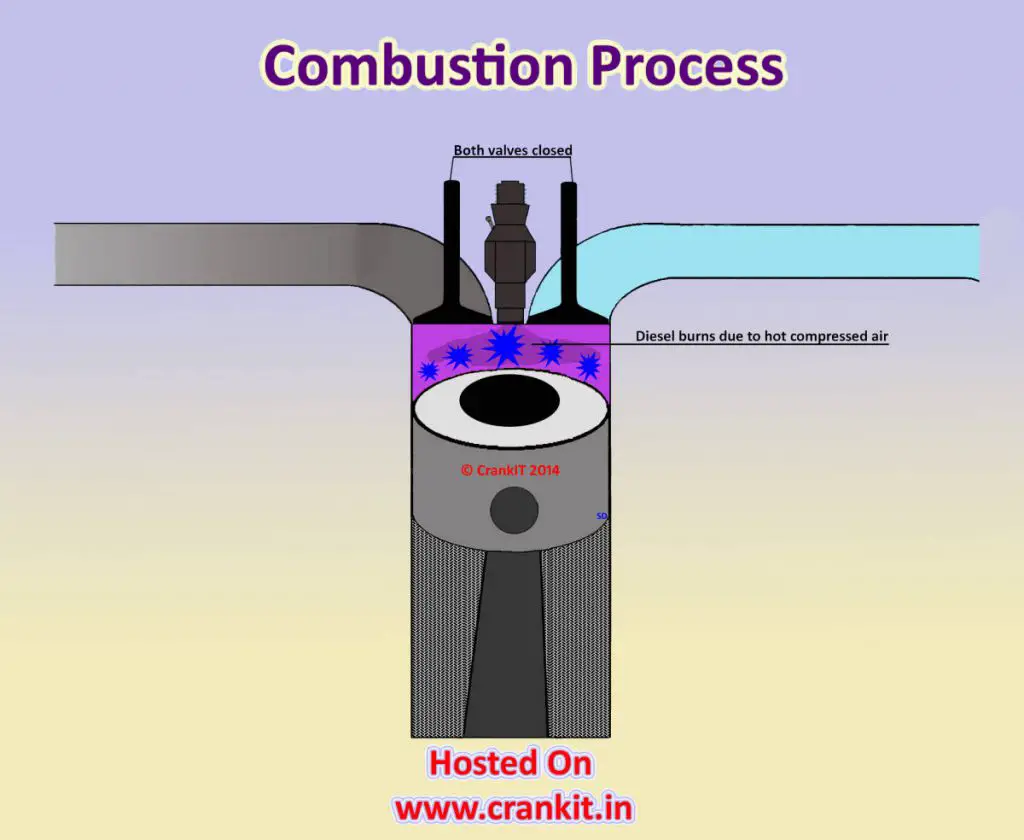
3. Power Stroke – Furthermore, these forces again push the pistons downwards resulting in their reciprocating motion.
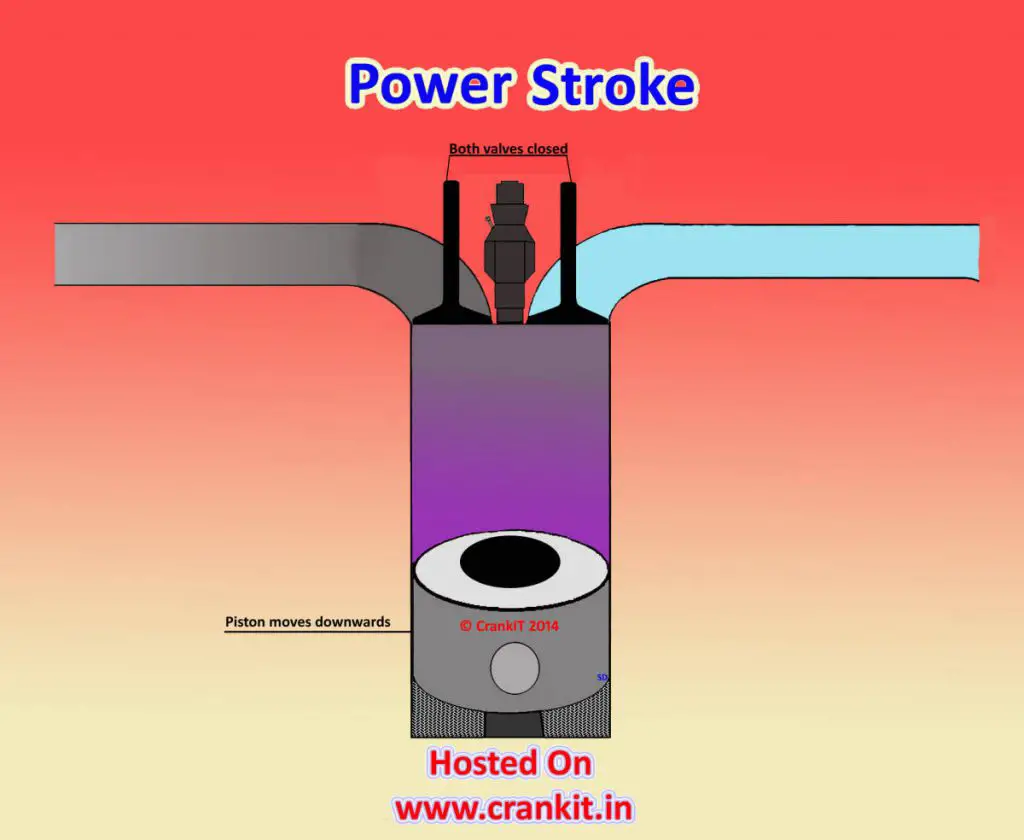
4. Exhaust Stroke – On their way up, the pistons push the exhaust gases above them thru’ the exhaust valve which opens during the exhaust stroke.
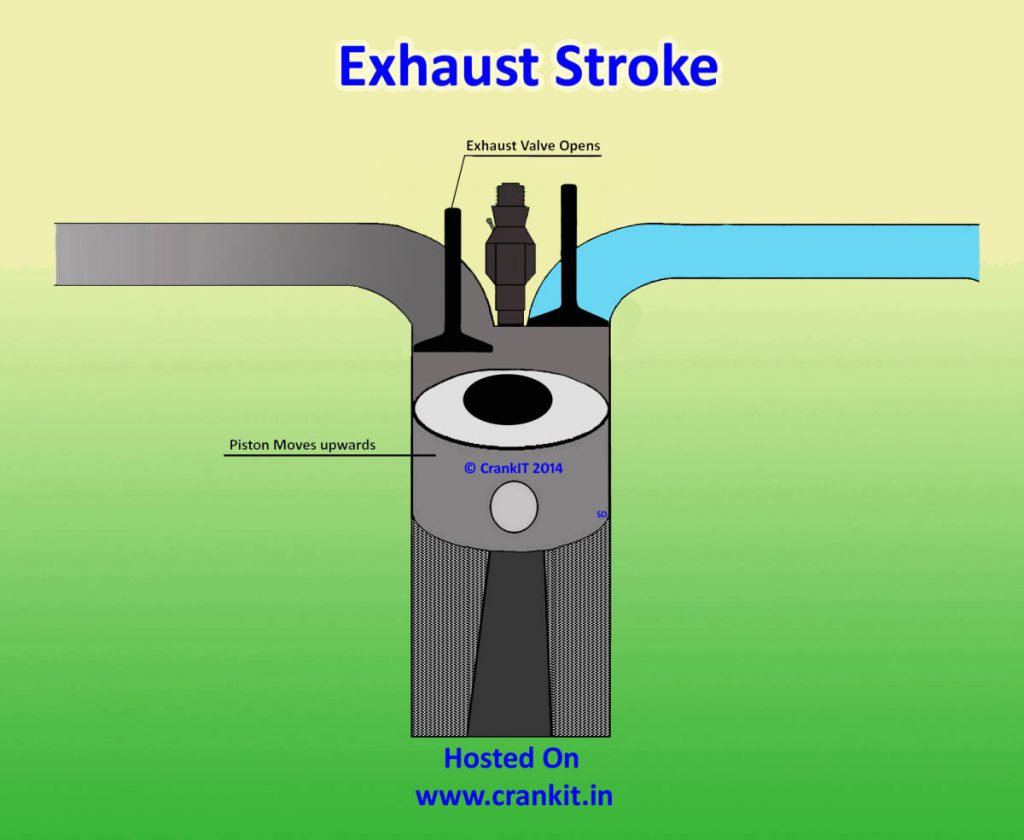
This cycle repeats itself until the engine turns off, resulting in the continuance of engine’s running.
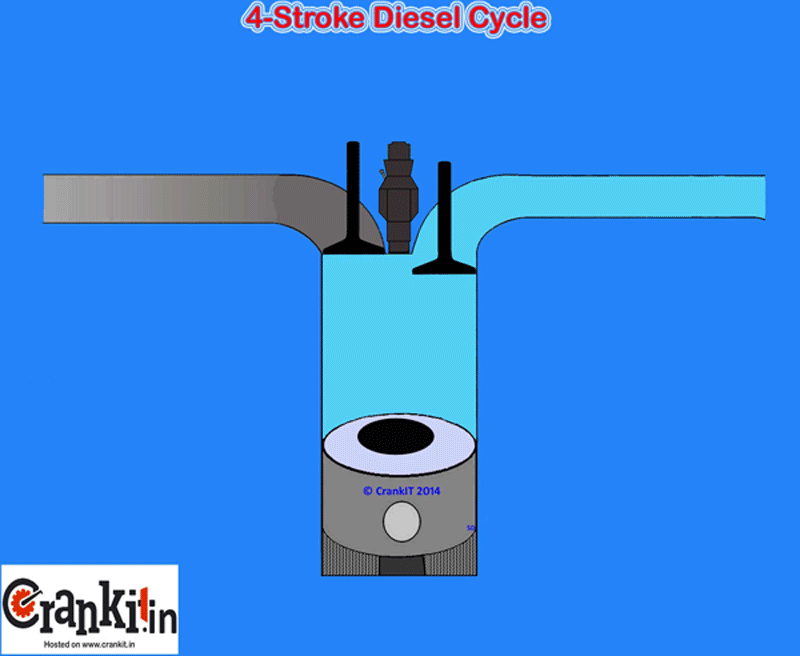
A diesel engine is mainly classified into two types – Indirect-Injection (IDI) & Direct-injection (DI). The Direct-Injection diesel cycle was an earlier generation technology. It later evolved into its successor & more advanced CRDi. Earlier generation utility vehicles, trucks, buses & generators still widely use the simple DI engines. Furthermore, sophisticated & refined CRDi engines became very popular in the Sedans, MPVs, SUVs and Luxury cars in the recent past.
For more information, please click here:
Read more: How a two Stroke Compression Ignition engine works?>>
